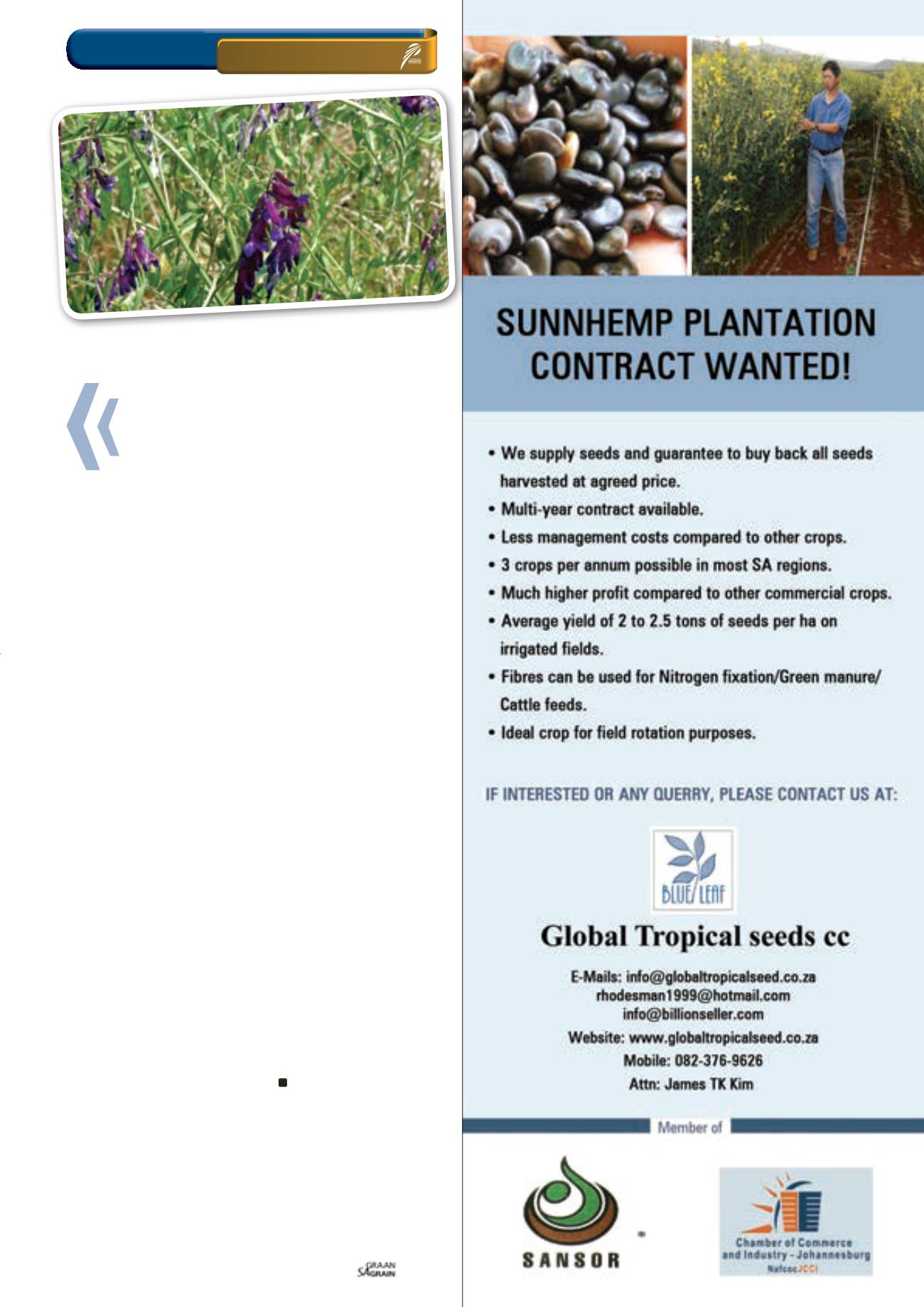

Usually vetch is killed during an active growing period, but not
later than two weeks before the planting of maize, which is done
directly into the mulch.
In no-till systems, killed vetch creates short-term, but effective
spring/early summer mulch. The mulch provides fodder, protects
the soil against erosion and retains moisture, allowing plants to use
mineralised nutrients better than un-mulched fields.
Animal production aspects
Vetches are very nutritious fodder and research conducted by the
Hamilton Veterinary Institute has shown that vetches can have the
following nutritional value: Crude protein (16% - 28%), digestibility
(50% - 82%) and metabolise energy (7 MJ - 11 MJ), and produce
yields of between 4 tons/ha - 5 tons/ha.
Vetch species selected for grazing purposes should not be heav-
ily grazed due to their ranking/creeping growth habit as this will
cause damage to the species. When the vetch is mixed with oats,
the grazing pressure can be increased. Research has shown that
145 g/sheep/day were achieved on grazing vetch (Spurway
et al
.,
1974).
Conclusion
Vetch species have enormous potential as an annual legume spe-
cies, especially if they are rotated between two summer growing
grain crops. It would however be essential to select the correct
species for its purpose especially if the vetch is only to be used for
fodder purposes at a later stage, once the combined grain crop has
been harvested.
Should a vetch species be selected for grazing purposes, the graz-
ing vetch (Vicia dasycarpa) is most appropriate. Very little produc-
tion research data is published for South African conditions, making
it extremely difficult to rely on international literature and data.
Nevertheless, the few existing reports on vetch species’ production
potential clearly emphasise their value in integrated crop and pas-
ture based livestock production systems.
For more information, contact Dr Wayne Truter at
wayne.truter@
up.ac.za
, Prof Chris Dannhauser at
admin@GrassSA.co.za ,Dr Hendrik Smith at
hendrik.smith@grainsa.co.zaor Mr Gerrie
Trytsman at
gtrytsman@arc.agric.za .References
Dickinson, E.B., Hyam, G.F.S., Breytenbach, W.A.S., Metcalf, W.D., Basson, W.D.,
Williams, F.R., Scheepers, L.J., Plint, A.P., Smith, H.R.H., Smith, P.J., van Vuuren,
P.J., Viljoen, J.H., Archibald, K.P. and Els, J.N. 2004.
Kynoch pasture handbook
.
Kejafa Knowledge Works, Maanhaarrand.
Smith, J. and Valenzuela, H. 2002. Green manure crops: Woollypod Vetch.
SA-GM-13.
Spurway, R.A., Wheeler, F.L. and Hedges, D.A. 1974. Forage and sheep produc-
tion from oats, rape and vetch sown in autumn with or without nitrogen fertilizer.
Australian journal of experimental agriculture and animal husbandry
: Volume 14.
CONSERVATION AGRICULTURE
ON FARM LEVEL
101

















